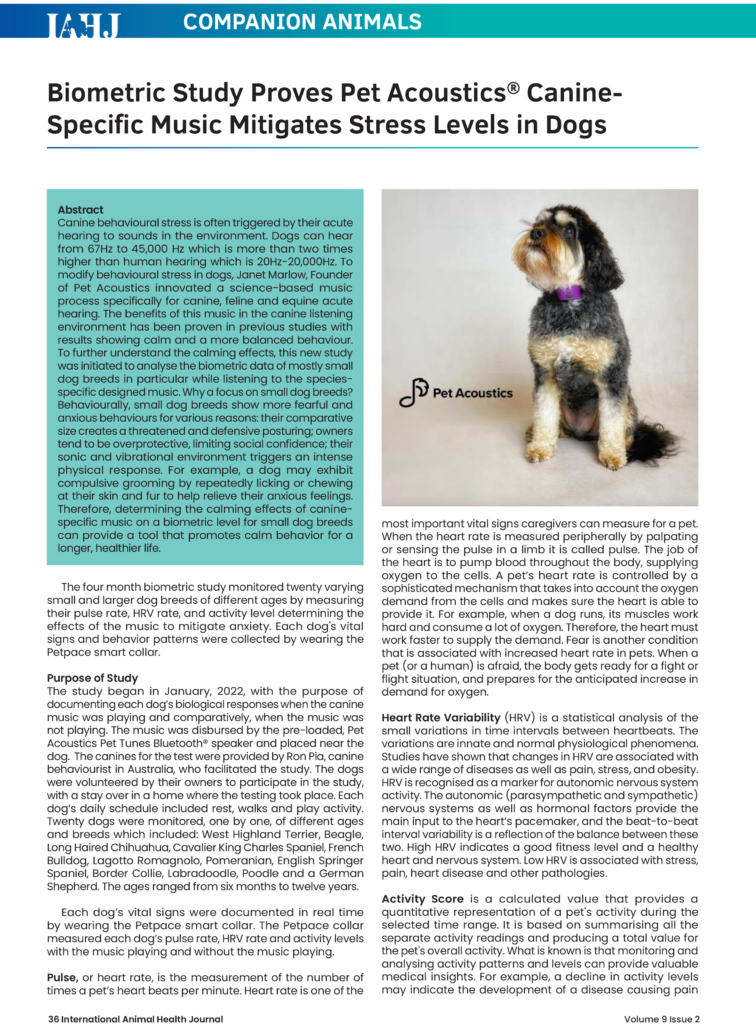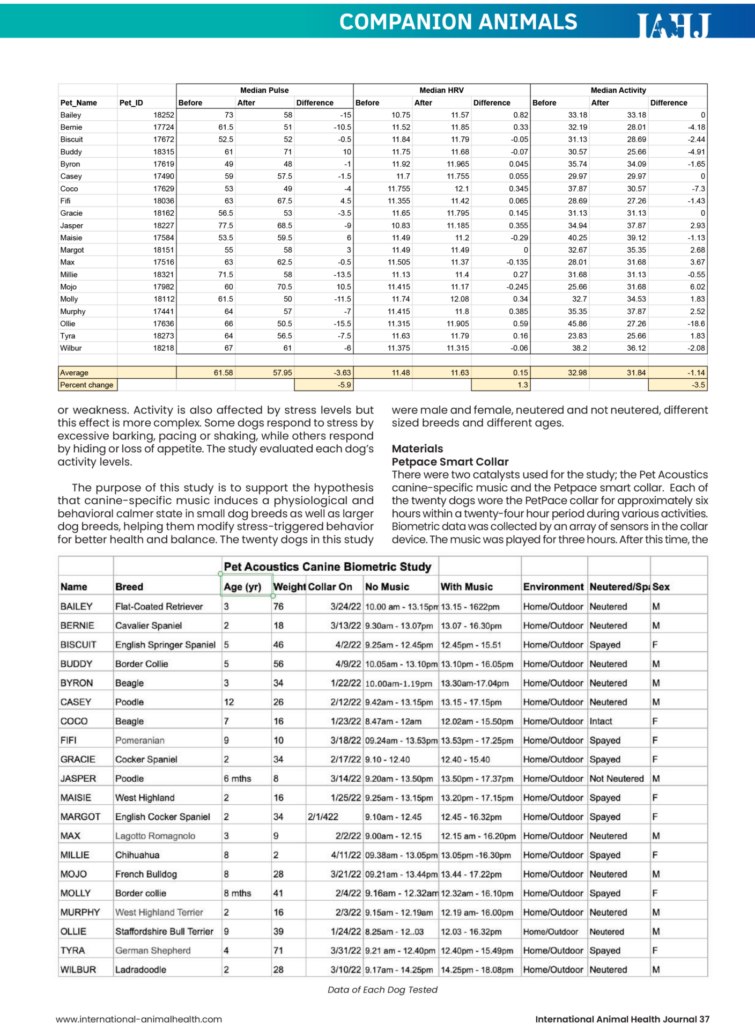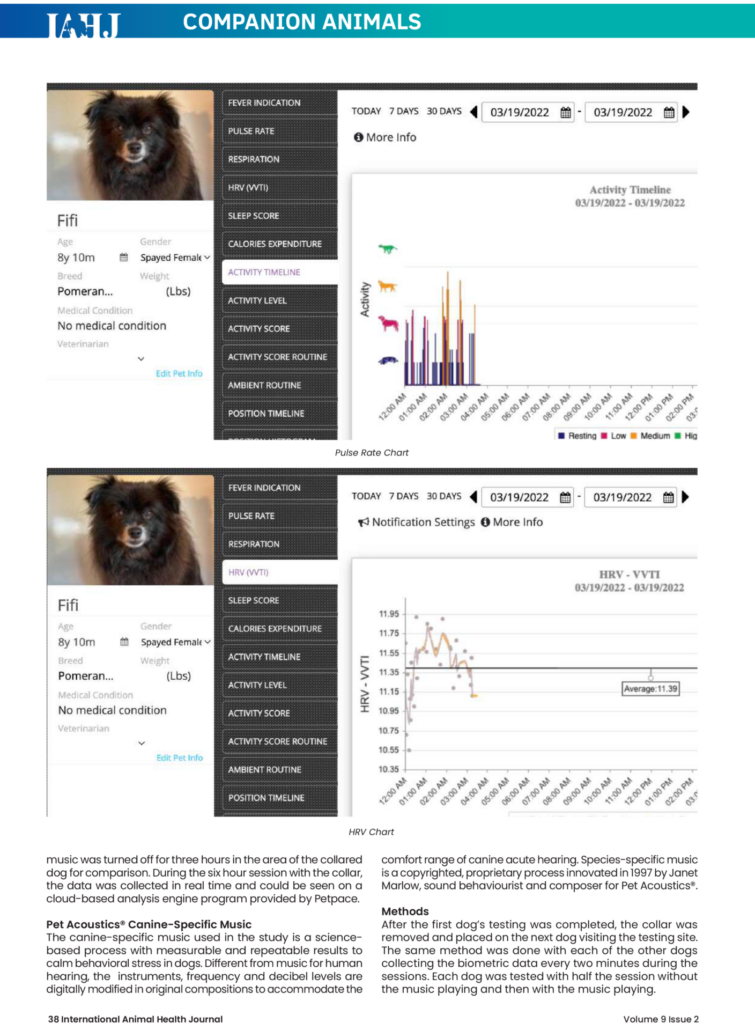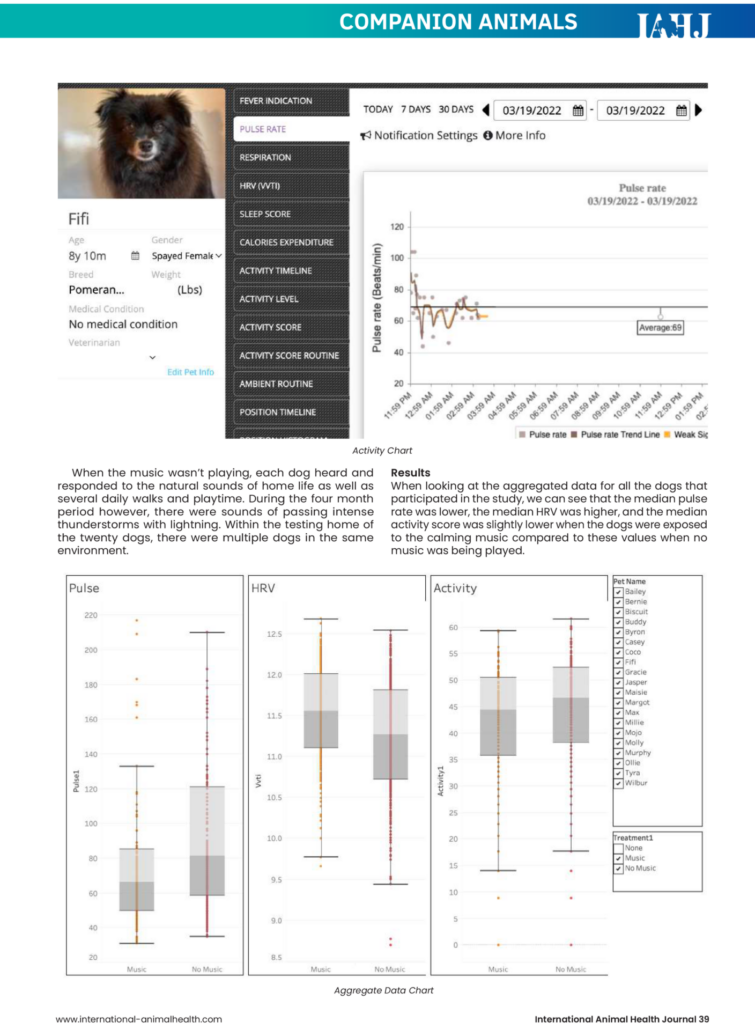Your Pet’s Health. Our Priority.
PetPace is the most advanced AI smart collar for continuously monitoring your pet’s health and GPS location.

Life-Saving Smart Collar
Redefining dog health monitoring beyond traditional collars.
Ongoing Monitoring
Continuous vigilance, keeping a watchful eye on your dog’s well-being
The Only Collar That Captures Millions of Data Points To Enable Unique Analytics and Machine Learning That Can Effectively Identify Health Issues
Vitals




Biometrics





- PetPace exclusive technology

A Revolutionary Approach to Advanced Analytics
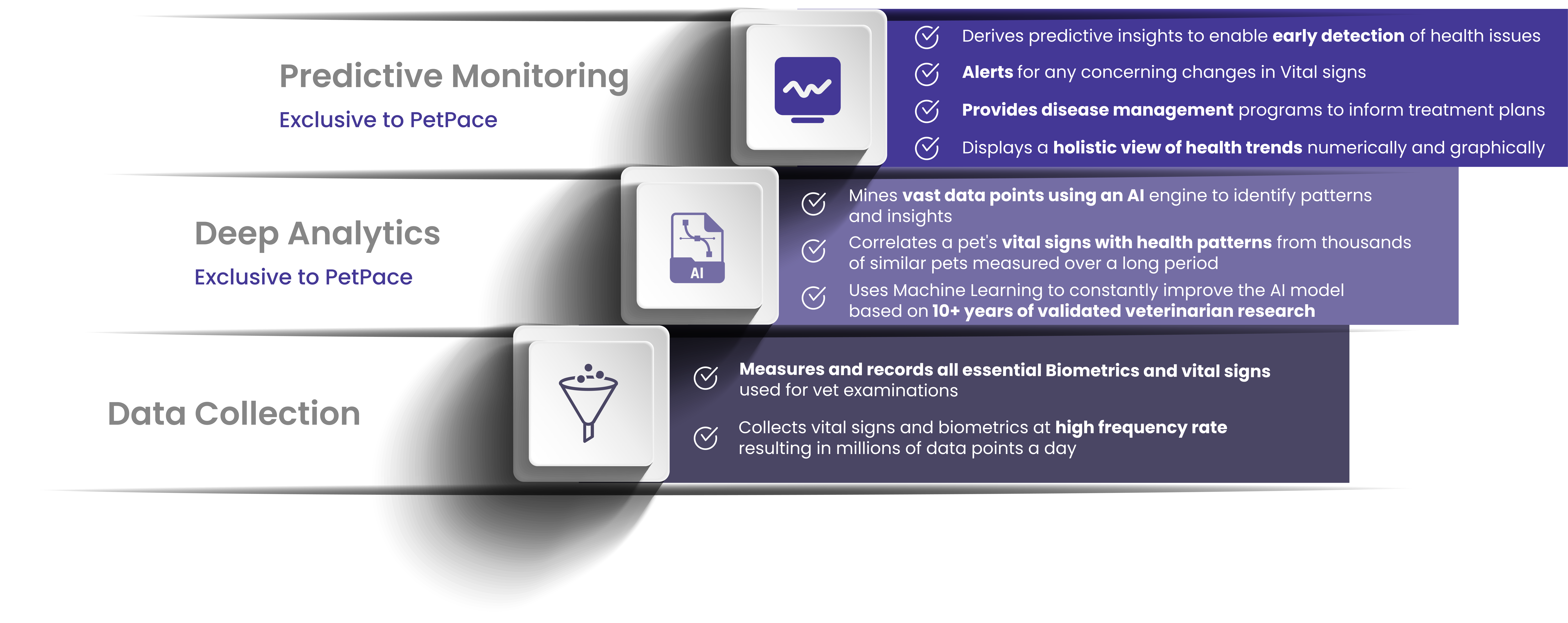
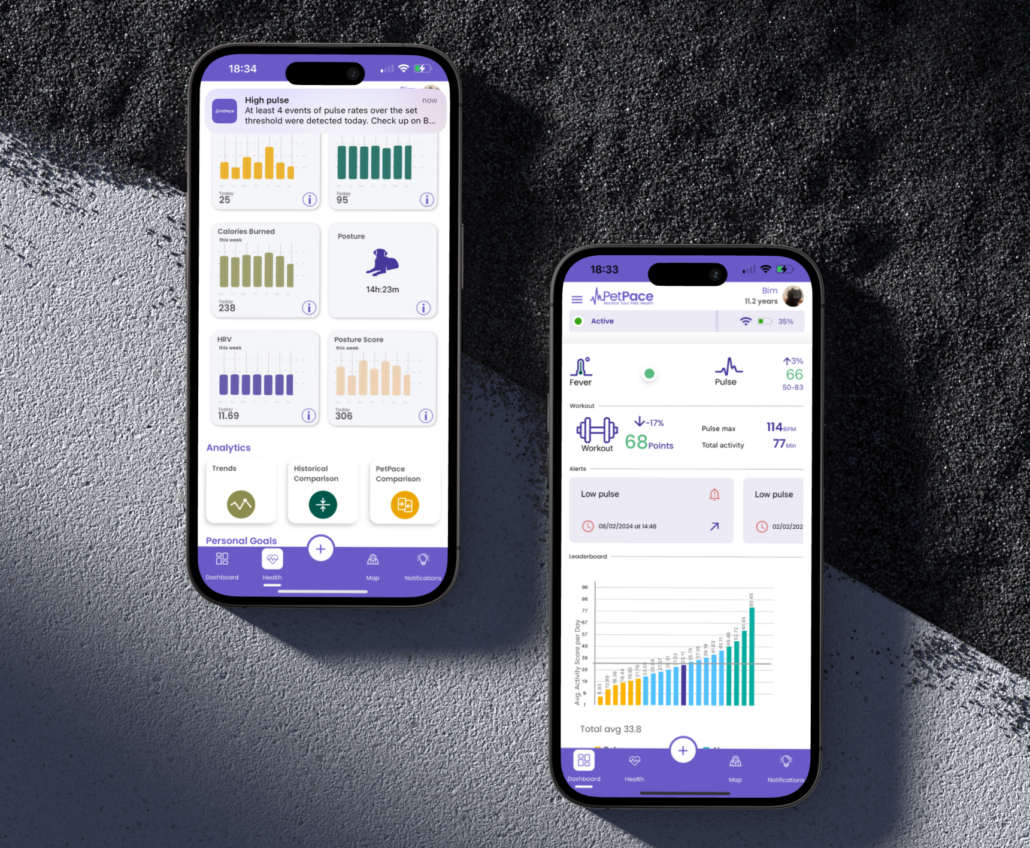
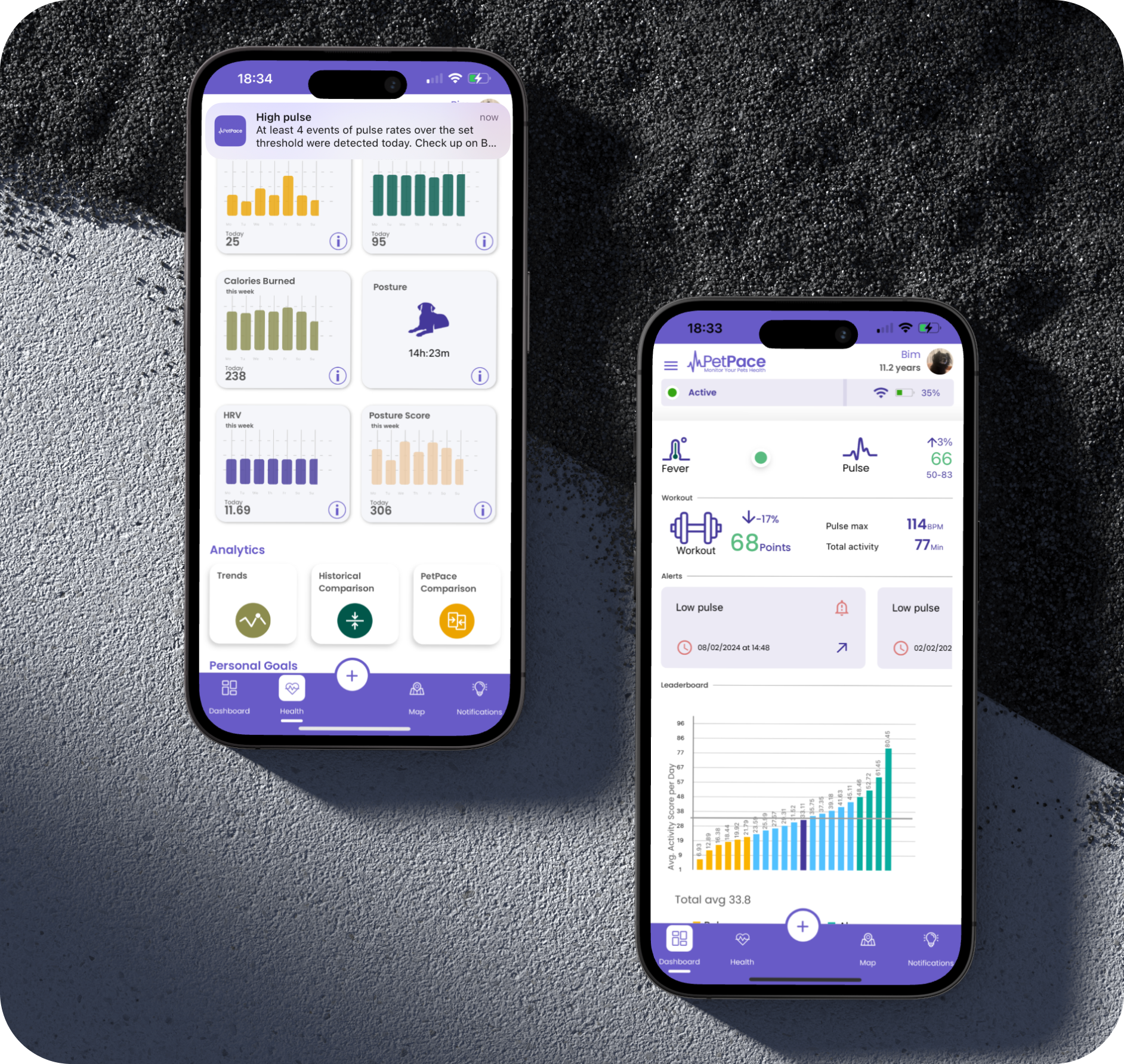
The Only Vet-Grade Smart Collar
The Only Vet-Grade Smart Collar
Don’t risk your dog’s health with a cheap alternative. PetPace is the only collar that measures all standard vitals used in vet examinations at a high frequency rate to run the most advanced analytics that exist for identifying health issues.
Unlike other health collars, PetPace’s AI machine learning technology has been validated by numerous institutes as an accurate tool for health monitoring.
| Health Monitors | Activity Trackers | ||
|---|---|---|---|
| Temperature | |||
| Pulse | Resting Rate Only | ||
| Stress Level (HRV) | |||
| Pain Indicator | |||
| Advanced Analytics | |||
| Disease Management | |||
| Alert Notifications | |||
| Respiration Rate | |||
| Activity Score | |||
| Sleep Score | |||
| GPS | |||
| Health Data Collection Rate | Every 2 Min. | Once A Day | N/A |
| Method Of Pulse Detection | Acoustic listening | Emits Ultra High Frequency | N/A |
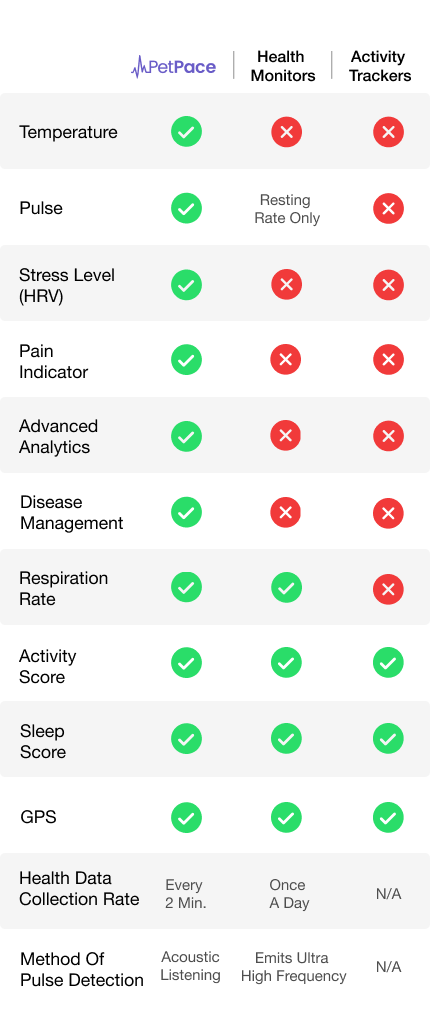
The most advanced Pet health collar
While some collars track activity or other surface-level measurements, only PetPace’s patented smart collar uses vet-developed artificial intelligence powered by millions of data points across all seven major vital signs to provide the most comprehensive analysis of your dog’s health.
Peace of Mind with Early Detection and Continuous Health Monitoring
“It is a dog’s natural instinct to mask their pain and discomfort until the disease has progressed. PetPace’s continuous monitoring of biometrics enables the early detection of health problems. Other smart collars measure only a few vital signs, which are insufficient to accurately determine a dog’s overall wellness,”
Dr. Asaf Dagan, Chief Veterinarian
How Petpace Works
Powered by the collection of millions of data points, the PetPace app is designed to be comprehensive and give your dog a voice for their health and well-being
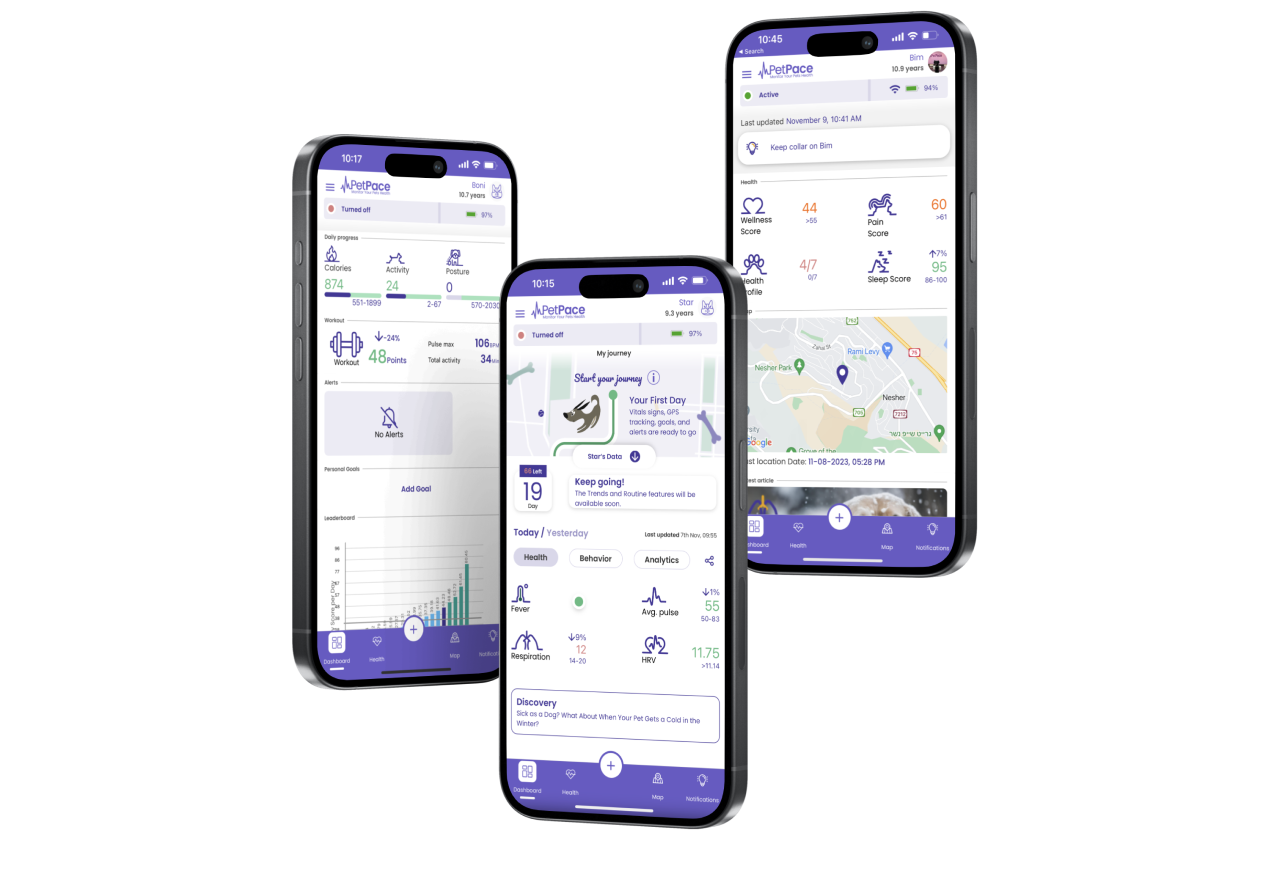
Health Monitoring
Monitor your dog’s vitals and receive alerts for abnormalities in pulse, temperature, stress level (HRV), and respiration rate.

AI-Powered Biometrics
Gain insight into your pet’s well-being with PetPace’s proprietary Pain Indicator, Wellness Score, Sleep Score and Activity Score. Set goals for activity level, workout intensity, and burned calories.

Trends & Comparisons
Track your pet’s health over time and compare to dogs similar in breed, age and size using PetPace’s database containing millions of data points.

GPS Location Tracking
Monitor walks and location history with PetPace’s built-in GPS. High-frequency location updates track your pet if they get lost and help return them safely.


See what others are
saying about PetPace
Tara C. Jul 6, 2023
We appreciated having the PetPace for the last few years of Lily’s life. It made a big difference in her care and my life because I didn’t have to check her vitals manually as often.
Liz L. Jul 10, 2023
Your collar was bought to help monitor an ailing senior dog. It helped us to make a decision to go ahead and euthanize him when the collar kept sending us high pain alerts throughout the last few days. The data your collar provided was a great comfort to us and helped our vet to monitor his condition. Thank you
Livia Jul 11, 2023
Our 18-month-old Golden Retriever has suffered from epilepsy since he was 11 months old. He needs 24/7 monitoring for this condition. PetPace gives us peace of mind; we can now go out and leave the dog on his own. We have set the alerts so we are notified immediately of any increase in activity level at night that might indicate a seizure.
Bette S. Jul 17, 2023
I want to thank you for this product it really helped Lindee Marie. Without your product, her life would have been shortened, and she would have suffered much more. I am very greatful to you for that.
Laurie A. Jul 28, 2023
The collar and app are great and have been very helpful in understanding my dog's “new normal” since he was diagnosed and we have his meds dialed in now.
Caroline Aug 8, 2023
We use the collar for monitoring our dog’s IBD/nausea. She has, on more than one occasion now, gotten so nauseous when we aren’t home that she takes to eating inedible objects (such toys, a blanket, and more recently our rug) to try to make herself sick to alleviate her nausea. The collar and intensive monitoring has been really helpful for us. Something like the bio-response feature could be extremely useful for nausea.
Dr Rick W. Aug 22, 2023
I have to say, I absolutely love this collar. It’s giving me crucial data I need to not only track my fur baby’s vitals but also get remote alerts so I know if something isn’t right. this is precisely what I need..... only been a couple of days, but we feel much better dealing with our epileptic pepper.
Matt W. Aug 24, 2023
As a current pet Pace collar owner and user for many, many years, I've have been very happy with it. My dog is 15 years old sick and will not be around much longer, but I want to have the luxury and convenience of monitoring her health.
Olive Sept 16, 2023
Our PetPace collar helps us to detect abnormalities and changes in Balou’s overall health, in particular, the HRV parameter that we use to decide if it is time to go to the veterinarian.
Join Our Pupletter
Subscribe to our newsletter to access exclusive content, expert advice, and stay ahead of the curve in pet-tech & health for ultimate pet parenting success:
We value your inbox and promise not to spam you. We will only deliver pawsitively valuable content straight to your inbox.

